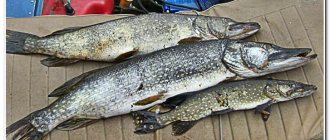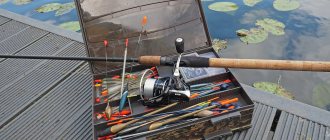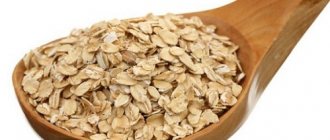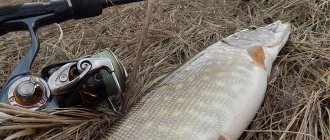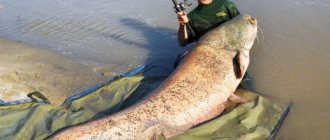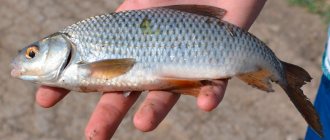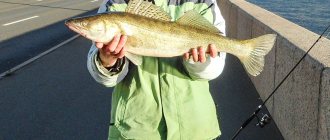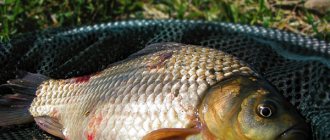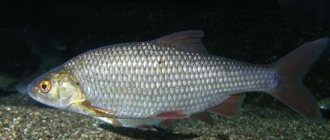Features of fishing on Akhtuba in April
April on Akhtuba is a month of fish abundance. Locals say: “In April on Akhtuba you can catch a fish with a notebook clip, but only those who don’t fish at all can be left without a catch.” At the beginning of April, warm, truly spring weather sets in. By the end of the month, the water on Akhtuba has already warmed up enough for heat-loving catfish, carp, carp, tench and local varieties of crucian carp - buffalo - to flock to feed.
The Astrakhan region is rightfully considered a real paradise for fishermen from all over Russia. Fishermen have a joke:
- What is it: green, long and smells like fish?
— Train Astrakhan-Moscow.
Professionals and fishing enthusiasts come to the Lower Volga, because only here you can catch real trophy fish and enjoy the continuous and varied bite.
Akhtuba and the entire Volga-Akhtuba floodplain are a traditional place for catching trophy specimens. Many different species of predatory and peaceful fish live here.
Catching pike perch and pike in spring on Akhtuba near the village of Selitrennoye
Here comes spring. The sun is getting higher every day, above-zero temperatures prevail, streams are flowing, but open water in the middle zone is still far away. Many are waiting for excellent fishing on the last ice, but spinning lovers, hungry over the winter, are rushing to the Volga-Akhtuba floodplain to open the next season, because at the end of March there is no ice here anymore.
We will talk about the water areas in the area of the village of Selitrennoye (photo 1) - the former capital of the Golden Horde - Sarai-Batu. Downstream Akhtuba passes into Kirpichny, up 10 km - the first three-river - Mangut (Kriusha), Akhtuba and Ashuluk, perpendicular - Banny, and also after 10 km almost in the opposite direction to the right - Kharabalyk, and in a straight line - Mitinka, which at the end finally flows into Mother Volga.
As the water warms up, the predator (and not only the predator) becomes more and more active; often, already at the end of March, pike perch and pike confidently grab the bait. The catfish awakens from hibernation and begins to hunt. In April, it is easier to catch it in the pits with jigs and live bait; closer to the high water, it comes out to smaller areas - trolling works well here. Kwok in the spring is ineffective, and it is not worth wasting time on this method.
After the ice drift, pike perch and pike stay in deep sections of the riverbed and in pits, but as the water warms up, active fish should no longer be looked for in the pits themselves (there are more bersh there), but on the edges, entrances, exits, bends, snags, and places with reverse currents. Here, of course, jig is preferable, since the bottom topography is far from uniform.
What to choose from the arsenal of jig baits? Some people like what they like, but I like twisters. I didn’t notice a big difference in the number of bites between “foam rubber”, twisters, vibrating tails and other “rubber”, but twisters are cheaper than vibrating tails, many of which, by the way, sail and are “treated” by trimming the belly, while “foam rubber” requires more complex installation and it must be dried after every fishing.
How to assemble a jig bait? There are many ways, and often this is connected with winding rings, sometimes with the use of tools, which takes time, so I assemble it like this: I insert a double into the ear of the “Cheburashka” weight with the hooks up, put a twister on one of the hooks - and that’s it. Leash from a quarter of “Ramenskaya” guitar string No. 2. There are no swivels, carabiners or locks - jig baits and wobblers do not spin in the water, a twist lock made of string easily unravels - it braids and holds serious loads. For catfish (my maximum weight is 97 kg), I also go with such a leash, only longer - the third part of the factory string, it has never let me down.
Jig heads are also quickly assembled, but then there are some disadvantages - one hook, more slips due to the lack of a hinge joint, they fly poorly because When casting, the hook and bait are in a perpendicular position relative to the direction of flight - the “braid” is braked by the rings and holds the jig head in this position.
It's hard to tell anything by the colors. I catch more with dark ones - brown, black, dark green, dark red, although I often catch just as well with other colors.
The main size of twisters is 3 - 4 inches - this is 7.5 - 10 cm with the tail unfolded. You can’t throw large baits far; they float both when casting and in the water. With them you will more likely complicate fishing than achieve the desired result. Changing the form often gives positive results.
Once Oleg Sklyarenko and I went to the nearby three rivers - Mangut, Akhtuba, Ashuluk. We entered Akhtuba, the first long hole up to nine meters, which is on the left, we ignored it, went to the second section on the left, right after the ferry crossing. It's about six meters. The weather is excellent - cloudy, almost calm and warm. We “pierced” several points with a jig - rare and indistinct bites. Let's go trolling - pike perch per kilo, and pike, pike, pike. We return to the beginning, where we took the pike perch, and anchor. The bait is periodically nibbled by rams; one was honestly caught “in the mug”. There seems to be a herd, perhaps there is a shepherd somewhere nearby...
We go down a little lower, I hang the load lighter - and throw it at 30 - 50 degrees against the current. Not without results - a couple of pieces per kilo. Bites on turning and hanging bait. Oleg throws downwards at different angles and periodically changes the “rubber”. And so he hangs a dark green silicone “worm” 15 cm long - and on the very first cast he drags the handsome keel for three. The second reeling on the second cast forced me to be thrown in Oleg’s direction, but my twister did not attract the attention of underwater inhabitants. After the fourth specimen, I turned to my partner:
- Give me a worm.
- Here, the last one, no more...
Immediately there were bites and three good specimens in a row. But here’s the problem: they gobbled up my “worm.” Need to do something. I take three twisters, cut off the tails of two and cut off their noses a little so that they are flat, the third one has only the nose (I leave the tail), I weld the whole chain with a lighter - it turns out to be a “worm” with a tail - and life immediately gets better. Pike perch under 2–4 kg did not allow silicone “worms” to pass through, there were almost no empty wires - either a blow, or a runaway, or a predator in the boat. A boat with two fishermen sat next to it - it’s hard not to notice two curved spinning rods, but they only took one fanged one.
Another interesting fishing, although not so pronounced. We jigged Sasha S. on the ferry pit opposite Selitrennoye. It was cold, there was a strong wind against the current (the sailors) - that’s why they didn’t go far. We move periodically, there are few bites, we have several bershas and a couple of pikes. Your partner throws against the wind downstream, which is understandable - the line doesn’t float, the wiring is of better quality, although you can’t throw it far. I cast to the steep bank - the search zone is wider, and the wind is not scary for the “multi”: the spinning rod is down - and all the wiring is on the fingers. And there are more bites from the shore.
Another point. Sasha reached into the drawer and dug up a silicone “frog” almost the size of a chicken egg. Hmmm, there are already problems with casting against the wind, and even such a sail... But I said nothing. On the second cast of the rubber miracle, someone bit off its paw, after the third, a two-kilogram pike perch was jumping in the boat, half an hour later there were already three of them, the same. We need to do something... The frog is a single copy - and it is all wounded, we periodically repair it with a lighter. There is a piece of foam rubber lying at the bottom of the boat (wipe the seats, hands), I tear off a piece, put it on the forend of the tee and pluck it - it turns out something similar to a ball. Smaller in size than Sasha’s bait, but not by much. The first three casts - and another plus the same specimen. It was far from boring fishing.
But in the spring it happens that, despite all the positive factors (continued good weather, the level without jumps), the pike perch ignores the jig, does not stay in school but rather scatteredly and hunts in water areas with unremarkable bottom topography and depths of 2 - 4 m. This is where trolling comes to the rescue . Usually troll paths are under ravines (steep banks) near the pits. For example, in Bannoy there are three pits - Abdulkina, Alimovskaya, Grishkina - and next to each you can drag wobblers. It is better to navigate unfamiliar areas with an echo sounder to maintain the required depths. Dissolution - 15 - 20 m, pike perch is not afraid of engine noise, if not vice versa. Speed - from minimum to 4 - 5 km/h - you need to experiment. It’s not bad when the wobbler periodically “undermines.” It often happens that many bites occur during stops. We turn off the engine, the boat moves forward by inertia for some time, then stops relative to the shore (a bite is possible) - and slowly begins to creep down, but the speed of the current is even higher than the speed of the boat and the wobbler is in operation, although it “plays” sluggishly and goes backwards ahead - a bite is also possible here. Moreover, when stopping, the wobbler goes deeper, as when trolling with the current, because the fishing line in the water does not sail so well in the oncoming weakening flow of water. At stops when biting, it is advisable to hook, which is not necessary while moving - usually the pike perch hangs itself.
Having passed the section, it doesn’t hurt to pass it in the opposite direction by rafting with the same wobblers (although it is possible with others) - the direction is perpendicular to the current. The wiring is varied: slow, fast, constant, jerky, with stops. In the latter case, it is better to hang a suspender (zero buoyancy) so that during pauses the wobbler does not float up or sink, but is at the same depth as during wiring. Alloy jig is also relevant; it’s a good idea to have another fishing rod equipped with a jig in the boat.
A few years ago, trolling rods appeared on sale, once at an exhibition I shook a few of them - I didn’t understand anything. Why else would there be an extra “parabola” in the boat? You can’t really throw it at her if you suddenly need it. I troll with jig spinning rods, with the exception of catfish, where the resistance of deep wobblers alone requires a more powerful rod.
In the spring, with good weather and a constant level, pike perch up to two kilos can be caught all day, there are also large specimens, but it is not evening yet. And then twilight comes, the sun has disappeared behind the horizon, but it is still light - and we have 40 minutes (it gets dark faster here) to take one or more trophies, which are hunting here at this time. It is advisable to use a landing net made of fishing line, so as not to waste time on untangling the hooks, or better yet, a hook, if you have sufficient experience. I often put my hand under the gill cover. At dusk, it is better to cancel the “alloy casting” - there is little time - and choose shorter sections, which were determined by the largest number of bites. Maximum darkness sets in, and the bite also noticeably weakens. Maximum darkness is not a “koli eye”, but a certain illumination at the moment, which cannot be darker. The situation is the same during the full moon, although there were exceptions when pike perch continued to be caught for several more hours, although not a trophy one, but as in the daytime - up to two kilos. The moon makes both night fishing and returning easier, but the sky is not always clear. Flashlights are required for illumination and to identify yourself in the dark. A navigator will also be far from superfluous. When going on your first spring twilight fishing trip, you need to note all the snags that come across on the way. Last year's tracks need to be deleted from the navigator and new ones recorded - snags are constantly changing, usually during ice drift and high water, and it would be nice to find an evening pike perch near the base or parking lot.
We can talk about wobblers almost endlessly - the assortment is very large. I will name only a few companies whose wobblers consistently catch predators in the Selitren waters.
— From Yo-Zuri - the entire Hardcore line with a depth of 11 feet - Hardcore LB 90 SP (photo 2), Hardcore SH-75SP (photo 3), Hardcore Wo'B'Ru 2-3 (photo 4), also Crystal Minnow DD 90 (photo 5), Crankin Shad.
— From Rapala — Shad Rap 7-9, Glass Shad Rap 7 (photo 6), Down Deep Husky Jerk 10-12 (photo 7), X-Rap Deep (photo 8).
— Bomber is also good, in particular Long A B24A (photo 9).
In general, you can try everything with a depth of 2–4 m.
— Last May, wobblers went on sale under the Fishycat brand of a Japanese company that existed on the domestic market for 20 years as KS LABO. The line is quite extensive, I immediately chose several models from the Akhtubinsky direction - Bobcat 95DSP (photo 10), Tomcat 80SP-DR - up to 2.5 m (3 - 3.5 m is quite realistic) and Bobcat 100DSP (photo 11) , Tomcat 67SP-DR (photo 12) - up to two meters. All these models are suspenders. I caught them last summer and fall - good aerodynamics, fly far enough, stable “game”, confidently hold the stream. And most importantly, they terribly irritate the predator. Excellent for trolling and casting from the shore and from a boat. And the price is lower than competitors.
Good fishing - and see you on Akhtuba!
Pechenkin V.
Weather on Akhtuba in April
The ice on rivers and lakes has long melted, and the water is beginning to warm up. The fish is preparing to spawn. Despite the fact that the nights are still quite cool, during the day you can already warm up in the hot Astrakhan sun. Arriving at Akhtuba, visitors to the fishing base “Fisherman’s Pier” seem to be transported to May in central Russia.
In April, on Akhtuba, fishermen can already spend the night in tents or rent a house or cottage at the fishing base “Prichal Rybka”, the territory of which is located on the left bank of the Akhtuba River in the Kharabalinsky district of the Astrakhan region, between the village of Tambovka and the village of Selitrennoye.
What to take fishing in April?
The weather in April in the Astrakhan region may well bring surprises, both in the form of 30 degree heat, and in the form of frost or heavy rain. Therefore, in order to relax comfortably on Akhtuba, you should take care of your equipment.
- Warm and waterproof clothing;
- Comfortable demi-season shoes, which can be complemented with light shoes;
- Mosquito and tick repellents;
- Rubber boots or wading overalls;
- Be sure to take hats from the sun and wind.
Photo: fishing in spring on Akhtuba
In Akhtuba, spring can be capricious and therefore it is very important to take care of having a first aid kit. It must contain means to combat the main hazards:
- take anti-hypothermia medications (protect yourself from freezing and hypothermia);
- protect yourself from overheating (there is a high risk of getting heatstroke);
- carry anti-burn medications with you;
- put in your first aid kit anti-digestive tablets and painkillers.
Such a simple set at first glance is enough for a short but safe stay in this region. It is also necessary to stock up on repellents in the form of sprays and creams, because insects become active in mid-spring.
It's time to talk about the importance of equipment. Here are the basic rules for choosing clothes:
- the preferred option is natural fabrics, which especially applies to underwear;
- clothing should be as comfortable as possible and not restrict movement;
- there is no need to insulate yourself beyond measure, because sweating is much more dangerous than chilling;
- Feet need warmth, always and everywhere.
What and how to catch on Akhtuba in April
In April, for fishing on Akhtuba for trophy caviar pikes and early perches, it is worth stocking up on durable spinning rods with spoons and spinners. In the spring, fishermen on Akhtuba should not purchase only heavy baits for long casts, because at the beginning of spring the fish are in shallow water. Lightweight spoons and floating rigs will bring in many more fish and help avoid snags.
By mid-April, the time comes for float fishing for roach and rudd, as well as hunting for bersh, pike perch and perch with a spinning rod. Any food can be used for bait: bloodworms, maggots, dough, worms, peas, corn or pearl barley. It is best for floaters to take several types of bait with them, because it is difficult to guess which one the fish will choose. Pike-perch, bass and perches are happy to grab spinners and spoons; they can also be caught using elastic bands with worms or brushes.
By the end of April, the water has already warmed up enough and you can start bottom fishing. Carps and carp readily bite on feeder gear with garlic-scented boilies, so after wintering the fish get rid of parasites and activate their appetite. Catfish are usually caught using strong twisted lines using live bait, snail meat or frog as bait. All these species are no less willing to bite on animal food - bloodworms or worms, because such delicacies as insect larvae are still scarce in the water.
Second half of March
With the end of the ice drift, the open water fishing season begins Despite the fact that at night the air temperature remains below zero, during the day it rises to 7-13 degrees. The rains are short-lived. And the later the ice finally disappears, the more intense the spring bite begins, because the fish need to restore their strength before spawning.
Immediately after the ice melts, zander and pike become active . During this period of time, predator fishing from boats and from the shore is successful. And if it is possible to determine the location of the accumulation of pike or pike perch, then fishing success is guaranteed. In March, pike perch preferably stay close to their wintering places, at a depth of about 5 meters. Catching pike perch from the coast will be more effective using jigs, with leisurely retrieval near the exits of channel depressions or across the edges.
When fishing from a boat, trolling or jigging and rafting with the current are preferable. And you shouldn’t rush with the wiring, because due to the low water temperature, the pike perch on Akhtuba is still quite slow and usually attacks the bait from an ambush, at a very short distance. In March it is excellent to catch with live bait from the coast or from a boat. At the beginning of spring, fishing for pike perch with live bait is just as effective as at the end of autumn.
Pike fishing is successful in all places, except for exits from wintering pits, in shallow waters, where the predator hunts for linen. It is noteworthy that the pike bite in March in shallow areas with relatively warm water, warming up to 6-7 degrees, is most intense, since the pre-spawning rush begins. Just keep in mind that pike is a little slow after winter , and its agility is reduced by the fact that it carries a lot of caviar.
In March, pike are excellent at fishing with artificial baits - using spinning rods and live bait, which is the most effective. By the beginning of the spring zhora, the pike grabs everything, the main thing is that the prey is close to the predator waiting in ambush. At the beginning of spring, take small live baits and artificial baits, since pike in March do not fight with large prey.
In March, perch continues to actively feed; its bite does not stop as the ice melts and may even intensify. They catch it at this time with a spinning rod using live bait - in shallow places where the ice melted earlier. Perch are attracted to these places by small fish and insect larvae.
What kind of fish bites on Akhtuba in April?
At the beginning of the month, the water is still warming up, and pike rush to spawn. In each shallow bay you can catch several dozen large egg fish. At this time, catching pikes does not require any professional baits or clever fishing; hungry fish grab everything and often even bite on a worm on a floater.
Following the pike, other types of fish go to spawn: perch, rudd, pike perch and catfish. The real Astrakhan roach rises along the Volga bed from the Caspian Sea.
At this time, it’s worth coming to Akhtuba with the whole family, because even small children can catch their first catch in their lives with the help of a simple stick with a hook.
Professional huntsmen at the Fisherman's Pier base will help you find and catch the best specimens.
Fishing in April
By the beginning of April, the water warms up and much more food appears, which stimulates an increase in the activity of hungry fish. Before the onset of high water, which occurs at the end of April, fishing is most varied . Despite seasonal fishing restrictions, the last ten days of April becomes the most memorable period of spring fishing.
By the beginning of April, the bite of white fish begins: blue bream, silver bream, bream, roach. In shallow water heated by the sun, rudd fishes well. Silver carp are coming to life in the coastal thickets. Fishing comes from the shore and from the boat. A feeder or donka is used as tackle. Animal bait is suitable: maggots, larvae, worms, since the fish at this time needs protein-rich food.
Crucian carp and carp, long awaited by fishermen, are becoming more active. The buffalo wakes up - a fish that was brought from America.
Feeding non-predatory fish should be done with caution. Along with the basic ingredients of plant origin, animal bait is added to complementary foods. In the spring, complementary foods that include milk powder and lean cottage cheese have a good effect. It creates muddy areas in the water and is an excellent lure for prey.
As for river predators, everything here is also favorable for fishing.
Features of fishing for pike perch
The pike perch has a period of increased hunting activity; it needs to be satiated before spawning. Therefore, throughout April, jigs and trolling for this fish give excellent results: the weight of caught specimens averages 5-6 kilograms or more.
As the water warms up, the pike perch leaves its winter places and, in search of prey, moves to shallow water and to the mouths of streams, where the water temperature already reaches 10-15 degrees. He begins to hunt near his favorite summer places: snags, backwaters and pools.
As in March, pike perch responds well to all artificial baits , and is caught less often with jigs due to the warming of the water. The pike perch bite in April is more effective during the daytime, since from 12 to 15 o'clock in the afternoon the temperature at the water surface rises by about 1.5 degrees, and this affects the hunting activity of the pike perch, because it is especially sensitive to the surrounding climatic conditions.
Catching Akhtuba catfish
By mid-April, the giant Akhtuba catfish appears and immediately begins to look for food. In spring, catfish do not disdain anything and take any bait nearby. A half-asleep catfish reacts only to very slow movements. And if successful, large individuals are on the hook, on average 70 kg.
To catch a catfish, you need to select gear that matches its mannerisms. Despite the lethargy of the fish in the spring, it is very difficult to catch a barbel weighing 50 kg, which requires considerable skill and experience.
Asp and saberfish
In April, the asp comes to life - it actively hunts for bleak and small roach. The location of asp activity is often indicated by the circling of seagulls and the flight of small fish over the surface of the water.
Such signs are also evidence of the passage of a school of saberfish. In the last ten days of April, rising along the bed of the Volga from the Caspian Sea in incredible quantities, this predatory fish rushes to any prey similar to its usual diet, and it eats small invertebrates, fish fry and insects.
Chekhon and asp are caught from the coast with a spinning rod using various spoons, but it must be taken into account that its shape should be narrow and elongated - due to the small mouths of predators. In addition, saberfish are good at catching worms.
Where to fish?
At dawn and in the evening, the water on the rivers simply boils with the abundance of spawning schools of fish. Here and there you can hear the heavy splashes of hunting pikes and “quack” catfish, in the shallow water a variety of peaceful fish literally jump out of the water, fleeing from predators such as silver bream, roach, rudd and crucian carp.
With the onset of high water, most fish go to spawn in the lowlands - flooded meadows, ilmeshins, estuaries, swamps and eriks. There the water temperature is higher and there is more food for the young. During a flood, fish can be found in literally any puddle; often trophy crucian carp or pike were caught not from a boat, but while standing in the middle of a flood meadow in waders.
Sometimes, a concentration of spawning fish can only be reached by a punt boat or a kulas, as the locals call it. The fact is that due to river floods, the groundwater level rises noticeably and it is quite difficult to approach the water due to the muddy bank.
Boat rental at the Fisherman's Wharf base will come to your aid and provide a boat and an experienced huntsman.
Fisherman's calendar: what kind of fish bites, where and what to catch
crucian carp
Where to fish - ponds, grassy pools What to fish for - float rod, feeder Bait - worm, dough, maggot Bait - porridge, bran, cake, flavorings Biting time - early morning and evening
Carp
Where to fish - steep rivers, reservoirs with a muddy or clayey bottom and a weak current What to fish for - bait, feeder, float rod with reel Bait - porridge, worm, dough, boilies, potatoes, corn Bait - cake, chopped worm, porridge, corn Biting time - dawn, evening dawns, warm nights
Bream
Where to fish - grassy lakes, deep bays with a muddy bottom What to fish for - float rod, donka, feeder Bait - worm, peas, steamed grains, dough Bait - bran, porridge, bread, chopped worm Biting time - dawn, before sunset, sometimes during the day and on warm nights
Roach
Where to fish - clearings in algae, quiet currents What to fish for - float rod, feeder Bait - dough, bread, worm, maggot Bait - steamed oats, porridge, bread Biting time - almost all day
Som
Where to fish - whirlpools, pits What to fish for - zakidushka, bottom tackle, girder Baits - frog, fried poultry, fish, crayfish Bait - using the quok method Biting time - warm nights, evening dawns
Zander
Where to fish - riffles, hard bottom, rock ridges, clean water, lack of algae What to fish for - spinning rod, bait, mugs, zherlitsa Attachments - live bait, frog, spinners, wobblers Bait - not needed Biting time - at dawn, evening dawns, warm nights
Pike
Where to fish - cliffs, riffles, snags, sedge thickets What to fish for - spinning rod, circles, girders, path Attachments - live bait, frog, spinners, wobblers, twisters Bait - not needed Biting time - morning, evening, in cloudy weather
Perch
Where to fish - pits, lakes with reeds, quiet currents What to fish for - floating fishing rod, spinner bait Baits - worm, small fish, spinners, May beetle larvae Bait - bloodworms, worms, bull's blood Biting time - morning, evening, in cloudy weather
Asp
Where to fish - upper layers of water, rapids, sandy fords What to fish - spinning, fly fishing, wiring, at night - casting Baits - cockchafer, spinners, twisters Bait - worm, beetles, cockroaches, fish Biting time - dawn and evening dawns
Chub
Where to fish - cliffs, overhanging banks, bridges What to fish for - floating rod, fly fishing, spinning bait Bait - dragonfly, live bait, worm, butterflies, grasshoppers Bait - steamed oats, bran, bloodworms Biting time - in clear, calm weather
White amur
Where to fish - deep places in reservoirs and ponds What to fish for - donka Bait - worm, dough, peas Bait - oat flakes, semolina, crushed biscuits, corn Biting time - morning and evening
Gustera
Where to fish - quiet muddy places What to fish for - floating fishing rod Attachments - bloodworms, worms, dough Bait - bloodworms, maggots Biting time - morning and evening
Rudd
Where to fish - quiet places in lakes and ponds What to fish for - floating fishing rod Bait - worm, dough, maggot, bloodworm, barley Bait - rolled oats, pearl barley, corn, millet Biting time - early morning and evening
Tench
Where to fish - muddy bottom in a quiet current What to fish for - floating fishing rod Bait - worm, caterpillar, bloodworm, grain Bait - chopped worm, cottage cheese, peas Biting time - morning and evening
Gudgeon
Where to fish - on a quiet current What to fish for - a floating fishing rod Attachments - worm, bloodworm, maggot, caddisfly Bait - bloodworm, maggot Biting time - morning and evening
Carp
Where to fish - steep rivers, reservoirs with a muddy or clayey bottom and a weak current What to fish for - bait, feeder, float rod with reel Bait - porridge, worm, dough, boilies, potatoes, corn Bait - cake, chopped worm, porridge, corn Biting time - dawn, evening dawns, warm nights
Vobla
Where to fish - steep rivers, tributaries What to fish for - float rod, feeder, bottom tackle Bait - dung worm, maggot, corn, dough Bait - steamed oats, porridge, bread Biting time - dawn, morning
Bersh
Where to fish - riffles, hard bottom, stone ridges, clean water What to fish for - spinning rod, bait Bait - dung worm, maggot, corn, dough Bait - steamed oats, porridge, bloodworms, worm Biting time - dawn, morning
Silver carp
Where to fish - rocky, clay and sandy bottom What to fish for - bait, feeder Bait - bread crumb, peas, corn Groundbait - rolled oats, pearl barley, peas, millet Biting time - early morning and evening
Bleak
Where to fish - on a quiet current What to fish for - a floating fishing rod Attachments - bloodworms, worms, maggots Bait - breadcrumbs, semolina, bran, milk powder Biting time - in the morning
Chekhon
Where to fish - in a fast current, half-water and the deepest sections of the river What to fish for - a floating fishing rod Attachments - a worm, maggot - bloodworms, maggots Biting time - during the day
Ide
Where to fish - in bays with weak currents What to fish for - float rod, fly fishing, spinning bait Bait - worm, bark beetle larva Bait - ground crackers, rye bread, powdered milk Biting time - morning, evening and afternoon in warm cloudy weather
Buffalo
Where to fish - steep rivers, reservoirs with a muddy or clay bottom and a weak current What to fish for - bait, feeder, float rod Bait - dough, corn, boilies, dung worm, porridge Bait - cake, chopped worm, porridge, corn Biting time - dawn, evening dawns, warm nights
Ruff
Where to fish - deep bays, quiet channels with a muddy bottom What to fish for - float rod, jig, donka Bait - worm, maggot, bark beetle larva, maggot, bloodworm Bait - bloodworm Biting time - morning and evening
The fishing base "Fisherman's Pier" will delight its visitors:
PROFESSIONAL JAGERS
Over the ten years of the base’s existence, a close-knit and responsive team has developed
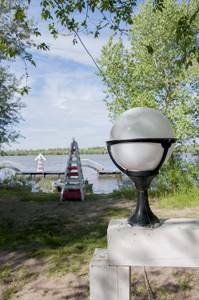
30 METERS FROM THE WATER
The recreation center is located directly on the shore of Akhtuba
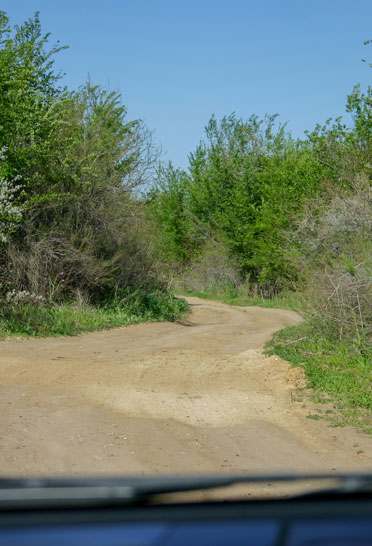
CONVENIENT ACCESS
There is access to the base all year round - both during high water and during spring thaw.
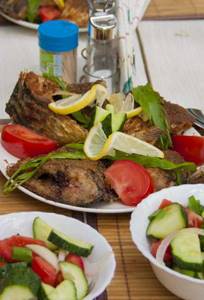
EXCELLENT KITCHEN
The local cafe serves delicious home-cooked food.
The fishing base “Fisherman's Pier” invites you to Akhtuba for spring fishing in April. Our experienced huntsmen will help you find places to catch trophy specimens and take you to any place on comfortable boats.
